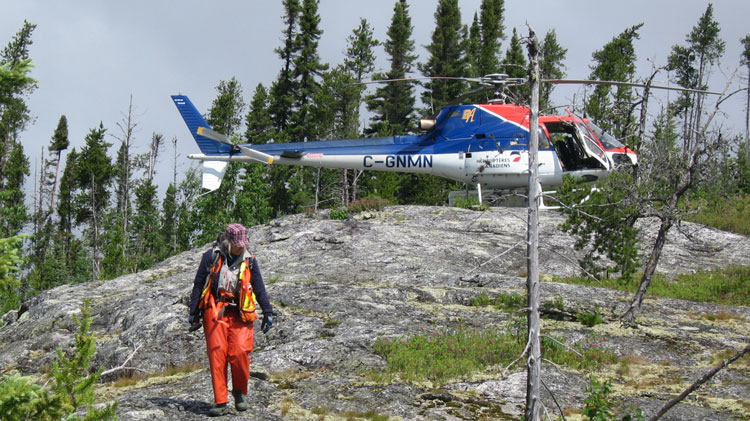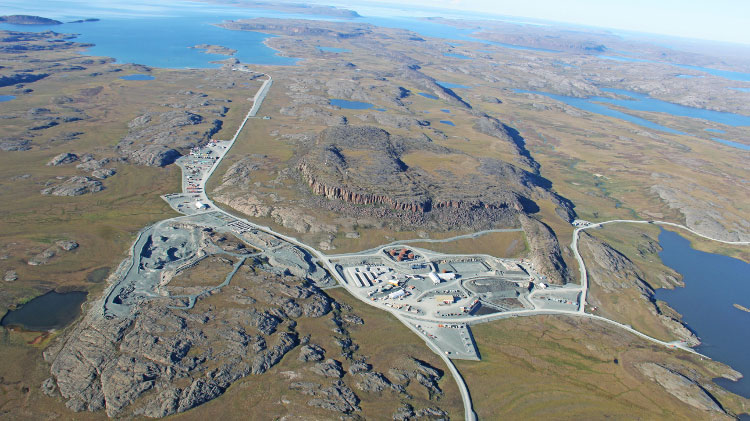Since the 1970s, mining companies have been interested in extracting minerals from the bottom of the Pacific Ocean. While there is plenty of valuable metal to be found, economically mining in the ocean is an enormous task. Yet Germany, in an attempt to secure access to several key commodities, has made an enormous push in research into the location and the liberation of these minerals.
Earlier this year, Dennis Kraemer and Charlotte Kleint, PhD candidates at Jacobs University in Germany, published a paper detailing a method for extracting metals with high-technology applications such as lithium and molybdenum from ferromanganese nodules. The nodules – spherical collections of minerals that include iron, manganese, copper, nickel and cobalt, and range from two to 15 centimetres in diameter – exist in clusters scattered around the world’s oceans but are especially abundant and rich in valuable metals in a region of the northeast Pacific known as the Clarion Clipperton Zone (CCZ). Located between Hawaii and Mexico, it is roughly five million square kilometres and boasts plentiful nodules at depths of around 5,000 metres. These are the nodules Kraemer is focused on.
Using a method of selective leaching, Kraemer and his colleagues were able to extract up to 80 per cent of the lithium and up to 50 to 80 per cent of other elements including molybdenum, tungsten, niobium and tantalum from nodules procured in the CCZ. “This enables the possibility for selectively extracting some high-technology metals from ferromanganese nodules and crusts prior to conventional base metal refining,” he says. “That’s quite new.”
Kraemer’s method also retains the main elements that make up a majority of the nodule; less than 10 per cent of manganese and iron components are dissolved, which means mining companies would still be able to recover them.
“If you mine an ore, you usually have the option of extracting certain metals and dumping the rest,” says Kraemer. “However, if this rest contains a lot of precious metals, it makes sense to extract, refine and sell these as well, thus lowering the cost of the operation by added revenue due to the selling of byproducts in addition to the main products.”
Germany’s treasure chest
If Kraemer’s method is ever to see commercial use, exploration and understanding of the CCZ nodules will need to be advanced: something his German compatriots are working towards. In June, Carsten Ruehlemann, project manager for manganese nodule exploration at Germany’s Federal Institute for Geosciences and Natural Resources (BGR), returned from a seven-week exploration voyage to the CCZ, his sixth since 2008. During the voyages, Ruehlemann and his colleagues have been trying to determine the size and abundance of nodules in two highly prospective zones within the German contract exploration areas that total about 3,500 square kilometres.
To do so they have developed a three-pronged approach involving sound, images and sampling. A multibeam system sends sound waves directly below the research vessel and records the time it takes for the acoustic signal to travel from the transmitter to the seafloor and back to the receiver. Moreover, they record the volume of the sound – called the backscatter – when the signal returns. Coupled with near-bottom video mapping and in situ sampling, the backscatter method allows BGR to determine nodule abundance and size.
In the June expedition, BGR explored a potential mining field with mainly small nodules (2-5 cm in diameter) that covers roughly 1,500 square kilometres and contains around 30 million tonnes of nodules in wet weight. Last year, BGR studied another nodule field of approximately the same size and resource in the eastern German contract area. According to Ruehlemann, these two areas alone contain about 20 million tonnes of manganese, 1.2 million tonnes of nickel and one million tonnes of copper, and could sustain 15 to 30 years of deep-sea mining.
Global impact
BGR has so far explored a relatively small portion of the entire CCZ. The area is split up into 13 areas of exploration under the auspices of the International Seabed Authority (ISA); the licence areas are contracted from ISA by state-sponsored as well as private companies. BGR is currently contracting two areas: one roughly 56,000 square kilometres and the other about 19,000 square kilometres. Other companies include Marawa Research and Exploration Ltd. (Kiribati), China Ocean Mineral Resources Research and Development Association (China), Deep Ocean Resources Development Company (Japan), the Government of Korea, Institut français de recherche pour l’exploitation de la mer (France) and Nauru Ocean Resources (Nauru).
The millions of ferromanganese nodules scattered throughout this region are known to contain high levels of base metals: on average 25 per cent manganese and three per cent copper, nickel and cobalt. They are formed over millions of years by the accumulation of manganese and iron oxides in the surrounding water around a nucleus, precipitating out of relatively cold water onto hard rock substrates.
Thomas Kuhn, a colleague of Ruehlemann’s at BGR, says quantities of manganese, nickel, cobalt, molybdenum, yttrium and tellurium contained in nodules of the CCZ likely exceed current terrestrial reserves. However, he is quick to point out that the estimates of the quantity of elements are subject to a wider margin of error. “This is because the numbers for the CCZ nodules can only be classified as resources whereas the numbers for the terrestrial deposits are classified as reserves,” he says, explaining that terrestrial reserves can be mined under the current economic and technological conditions while the underwater nodules cannot.
Still, according to Kuhn, the value of the metals stashed away in the nodules is worth hundreds of billions of dollars. The total amount of nickel in the CCZ is worth an estimated US$35.7 billion, and copper an estimated US$15.6 billion.
Kuhn says he believes mining ferromanganese nodules would have a major impact on global metal prices. If mining activities were to start at the same time in all 13 licence areas in the CCZ and each produced two million tonnes of dry ore annually, he says the amount of manganese accumulated would represent 81 per cent of the current global market and the cobalt produced would represent 45 per cent. Nickel, the most economically valuable metal present in the nodules, would account for 23 per cent of the global market.
The next step
So far, the biggest economic potential comes from the high concentrations of manganese, nickel, cobalt and copper. While Kraemer’s research does give some hope that extracting other metals present in the nodules will be economically viable one day, Kuhn, who advised Kraemer and his colleagues on their work, says he believes the process is too expensive and unreliable for the time being: “At the moment, this method is only established in the lab and far from working at an industrial scale.”
BGR has been exploring its licence areas since 2006 and is planning to continue for the next seven years in greater detail. “We want to identify a field or explore a location or site within these larger areas where mining could actually start, and explore in such a detail that a mining company could start right then when we are finished,” says Ruehlemann. “That’s the next stage.”
Aker Solutions, a Norwegian technology provider working mainly in the oil and gas industry, has been working closely with BGR to develop a “mining concept.” The idea is to have a robot vehicle, or “crawler,” to collect ferromanganese nodules found along the bottom of the ocean. The nodules would be transported through flooded flexible pipe to the main vessel to be stored. The nodules would then be moved onshore for processing.
The German Ministry of Economics is currently in the process of tendering offers from mining companies interested in the area. Mining will not start any time soon, Ruehlemann says, adding, “I’m convinced that it will only come in the next 10 years or so.”
Whoever gets access to the German contract area is going to have to invest heavily in the project; Ruehlemann estimates that it will require a US$1 billion initial investment and around US$200 million in operating costs per year.



